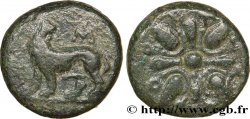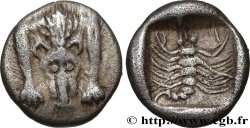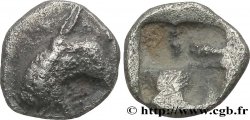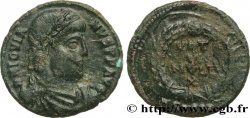v33_1822 - Préparation de la 20 francs Pétain, type Turin, en aluminium, tranche striée, 3,6 g - Essai 1938 Paris G.853
MONNAIES 33 (2007)
Startpreis : 250.00 €
Schätzung : 500.00 €
Erzielter Preis : 411.00 €
Anzahl der Gebote : 10
Höchstgebot : 600.00 €
Startpreis : 250.00 €
Schätzung : 500.00 €
Erzielter Preis : 411.00 €
Anzahl der Gebote : 10
Höchstgebot : 600.00 €
Type : Préparation de la 20 francs Pétain, type Turin, en aluminium, tranche striée, 3,6 g - Essai
Datum: 1938
Name der Münzstätte / Stadt : Paris
Metall : Aluminium
Durchmesser : 34,74 mm
Stempelstellung : 6 h.
Gewicht : 3,57 g.
Rand striée
Seltenheitsgrad : R3
Kommentare zum Erhaltungszustand:
De minimes marques de laminage au revers sinon un exemplaire splendide sur flan miroir et les bords coupants sous les doigts
N° im Nachschlagewerk :
Vorderseite
Titulatur der Vorderseite REPUBLIQUE - FRANÇAISE.
Beschreibung Vorderseite Tête de la République à droite, coiffée d'un bonnet phrygien lauré ; signé P. TURIN sous le buste.
Rückseite
Titulatur der Rückseite 20 / FRANCS / 1938 / LIBERTE / EGALITE / FRATERNITE / ESSAI.
Beschreibung Rückseite En sept lignes, entre deux épis de blé verticaux.
Kommentare
La pochette qui contenait cet essai était inscrite 3,6, ce qui nous laisse penser que le poids théorique était celui-ci et non 3,5 g. Compte tenu de la situation politique de l’époque, on peut présumer que cette fabrication date en réalité de 1941, au plus tôt, et était un essai de métal pour la mise au point de la 20 francs Pétain, dès qu’il fut certain que le cupro-nickel ne pourrait être utilisé. Exemplaire qualité collection Pierre.
The sleeve that contained this test was inscribed 3.6, which leads us to believe that the theoretical weight was this and not 3.5 g. Given the political situation at the time, we can assume that this production actually dates from 1941, at the earliest, and was a metal test for the development of the 20 francs Pétain, as soon as it was certain that cupro-nickel could not be used. Pierre collection quality example
The sleeve that contained this test was inscribed 3.6, which leads us to believe that the theoretical weight was this and not 3.5 g. Given the political situation at the time, we can assume that this production actually dates from 1941, at the earliest, and was a metal test for the development of the 20 francs Pétain, as soon as it was certain that cupro-nickel could not be used. Pierre collection quality example








 Berichten über einen Fehler
Berichten über einen Fehler Die Seite drucken
Die Seite drucken Teilen meiner Auswahl
Teilen meiner Auswahl Stellen Sie eine Frage
Stellen Sie eine Frage Einlieferung/Verkauf
Einlieferung/Verkauf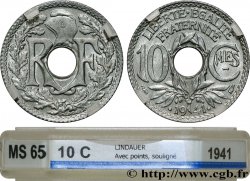
 Details
Details





